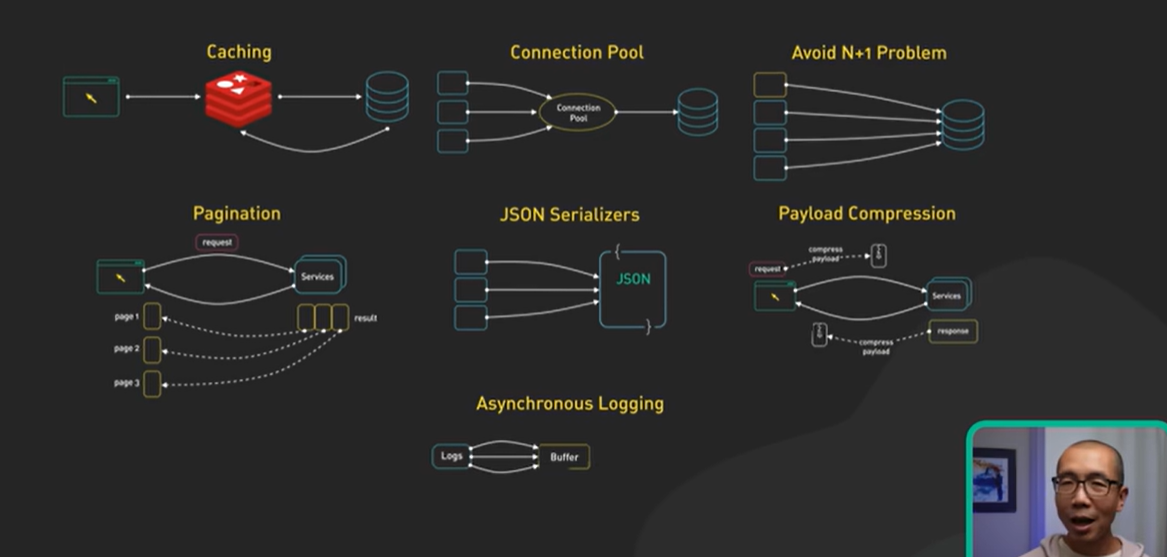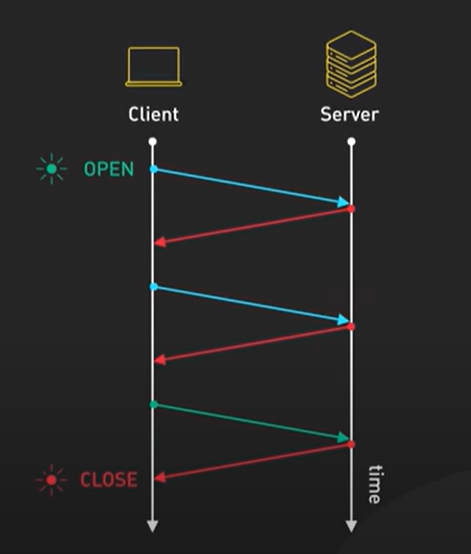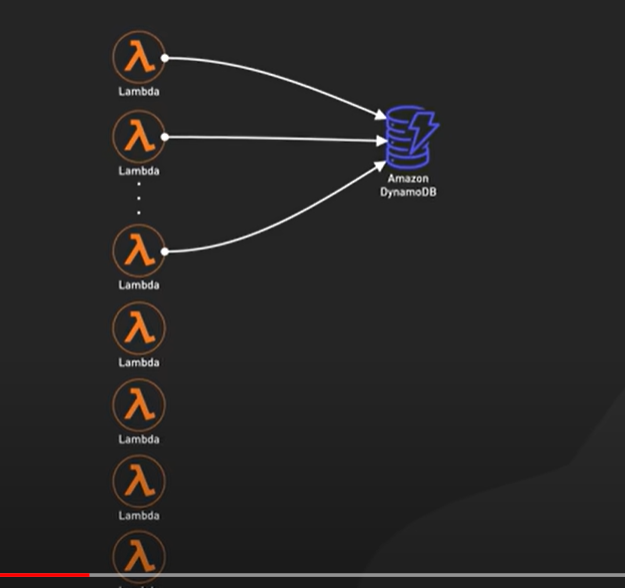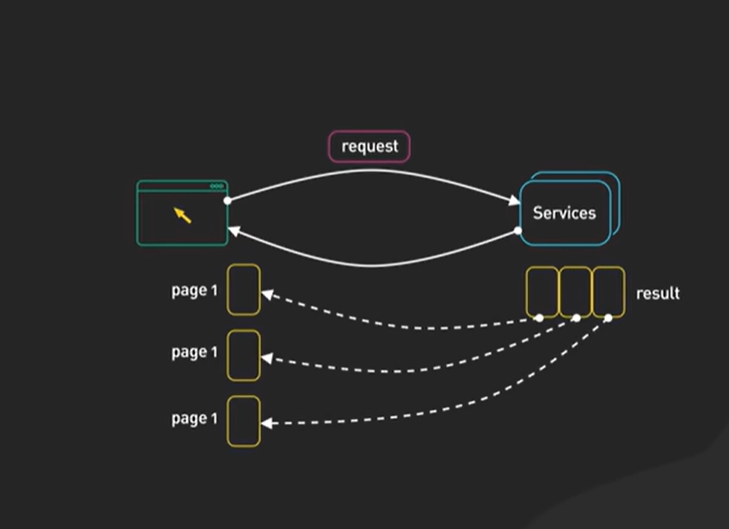API Performance Improvement #
Based on: Top 7 Ways to 10x Your API Performance - YouTube
Optimization should not be the first step of development

1. Caching: #
-
If same request is repeated multiple times –> cache hence no need to recompute or hit the DB again.
-
For DB, its: MemCacheD or Redis
2. Connection Pooling: #
-

-
Having continues connections with DB can slow down server as each connection requires a lot of handshake protocol. Hence, it s a good practice to already have a set of connections ready with each set of API. This is difficult in serverless applications like Lambda and can cause big problems:
-

-
Solution (at-least on AWs): RDS Proxy:- It sits between DB and applications (including AWS Lambda) to efficiently manage the DB connections
3. N+1 query problem: #
- Ideally, we should fetch data in a single request to Db instead of asking or querying it N times. Conclusion being, we should try to club requests to query our DB.
4. Pagination: #
-
If data to be fetched or requested from DB or server is huge, it will slow the response time –> Hence we should paginate our response into multiple pages to reduce data transfer in single go.

5. Json Serialization: #
-
Serialization takes time …hence consider ways to reduce that time
-
Example: Can think of using gRPC or some json serialization library which is very fast.
6. Compress API response payloads to reduce network latency. #
-
Various CDN also perform these tasks example: Cloudfare
7. Async Logging: #
-
Logging is important but writing logs during stream processing applications can cause bottleneck
-
Hence, in such scenarios it is better to log logs via async operations.
-
But, there is a small chance that the some logs can be missed in this case.
